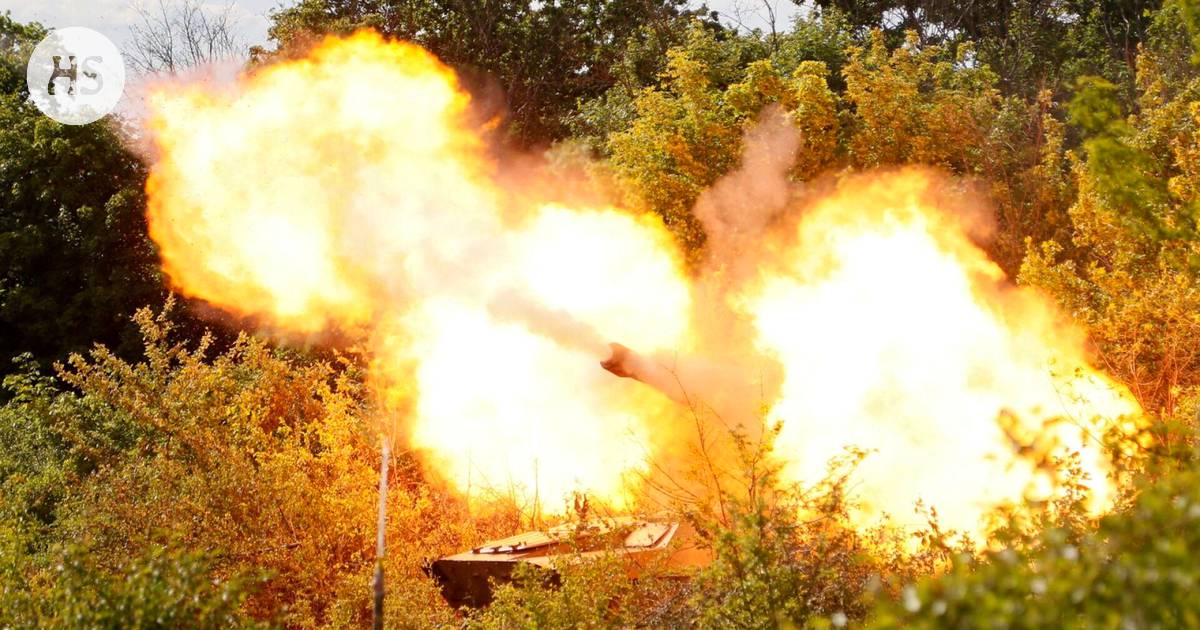The consumption of artillery ammunition exceeds the global production of ammunition many times over.
Russia According to the General Staff of the Ukrainian Armed Forces, in the past week, 20 train wagons of artillery ammunition were transported from Belarus to the Russian side, reports the news agency UKrinform. According to the news agency, the train was heading towards the city of Belgorod, and the ammunition was intended for the front in eastern Ukraine.
Ukraine has previously accused Russia of continuous attempts to involve Belarus in an attack against Ukraine.
But is 20 train cars a lot?
Artillery shells are heavy, so instead of volume, it is their weight that decides the freight. The 152-millimeter grenades used by the Russians typically weigh about 40 kilograms when fired, the 122-millimeter ones only half that.
With an average weight of thirty kilos, about 2,500 rounds of ammunition would go into a 70-ton train car, if smaller and older ammunition were also included. There would thus be around 50,000 pieces of ammunition in a hose of 20 wagons.
Deputy Minister of Defense of Ukraine Hanna Maljar reviewed last Sunday’s issue In The Washington Postthat Russia fires more than 60,000 artillery shells in Ukraine every day, Ukraine only a tenth of this.
So twenty train wagon lists is really not enough, because it is not enough for Russia to fight for even one day.
If The assessment presented by Maljar is almost correct, the use of artillery in Ukraine is absolutely pointless. The war is being fought not only in the east but also on the southern fronts, but most of the fighting is concentrated on a few targets of intense fire in the Donbas region in eastern Ukraine.
The biggest artillery battle in the Nordic countries took place at the end of the Continuation War in Tali-Ihantala. The battle lasted fifteen days and as a result, Finland managed to stop the advance of the Soviet army.
The Finnish artillery fired more than 12,000 rounds on the hottest day, July 3, 1944. According to Finnish accounts, the Soviet Union’s heaviest day of firing was June 28, 1944, when the Red Army’s tubes fired 14,000 rounds at Finnish positions.
There are thus about four Tali-Ihantala going on all the time in Ukraine. Even if half of the ammunition is used elsewhere than in Donbass, the Russian army will be crushed there anyway by the power of two Finnish major battles. And this has been going on for months.
It must be remembered that the battle of Tali-Ihantala took place in the area of two villages in Karelia. For example, the Ukrainian General Staff said in its Friday evening report that Russian artillery fired on 29 population centers in the densely populated areas of Donetsk and Luhansk.
Artillery shells huge consumption has completely confused the world ammunition market. Brokers are competing for ammunition, and Russia is trying to prevent the delivery of ammunition to Ukraine as much as it can.
The events related to the ammunition also show that Russia has been preparing for the ongoing war years ago.
Two medium-sized ammunition depots exploded in Ukraine in 2017, and Ukraine blamed Russian saboteurs for the actions. There was a big bang in October 2018, when a huge ammunition depot exploded and ignited a fire that lasted for days in the small town of Itšnia near the border with Belarus. According to information provided later, 88,000 tons of ammunition would have been destroyed.
Read more: A weapons depot exploded in Ukraine – 12,000 evacuated, sabotage is being investigated, President Poroshenko suspected Russia
Ukraine’s intelligence service SBU investigated three options: damage, Russian sabotage or a crime by its own personnel. In the latter case, ammunition would have been sold on the black market and the tracks covered by fire. In hindsight, however, the Russia option seems likely.
Self in this case, Russia started destroying Ukraine’s munitions already in October 2014, when the war in eastern Ukraine was raging at its most intense last time. At that time, Russian military intelligence agents hit a Bulgarian businessman Emilian Gebrel ammunition depot in the Czech Republic and detonated 13 tons of artillery shells. They were allegedly on their way to the Ukrainian armed forces in eastern Ukraine.
The case became public only last year, when it became clear that Russian military intelligence agents were involved Alexander Mishkin and With Anatoli Tsepi. In March 2018, the same couple went to Salisbury to poison a Russian agent Sergei Skripalin and this daughter Julian With Novichok nerve agent.
Read more: The men suspected of Novichok poisoning of a double agent became the center of a new dispute between the Czech Republic and Russia
of the United States the threat images of the armed forces, warfare similar to the ongoing artillery battle in eastern Ukraine seems to have risen no later than 2017. Namely, the defense administration almost tenfold the appropriations it requested for artillery ammunition in the 2018 budget.
Naturally, Russia has had the most time to prepare and store ammunition. However, it seems that a situation like the current one has not been predicted, if ammunition has to be washed up to the brim of Belarusian warehouses.
According to Ukraine’s Deputy Defense Minister Hanna Maljar, the ammunition consumption of the Ukrainian artillery alone is currently greater than the production of ammunition in the entire world. However, peace is unlikely to be created by firing all the grenades, because man is cunning in inventing killing tools.
